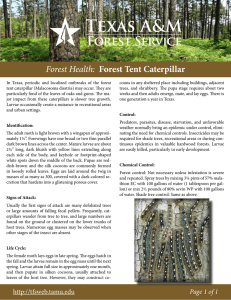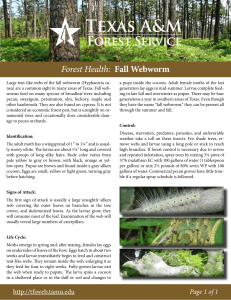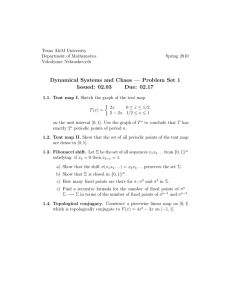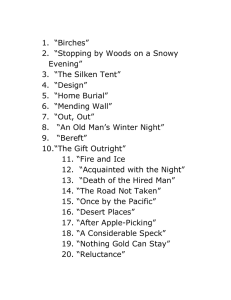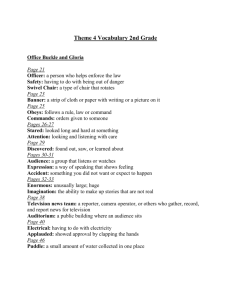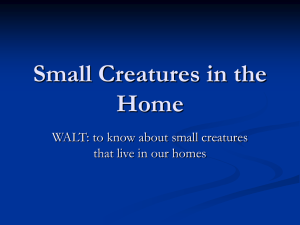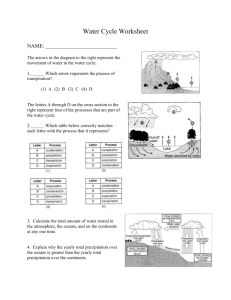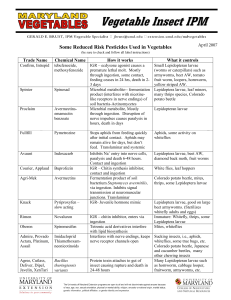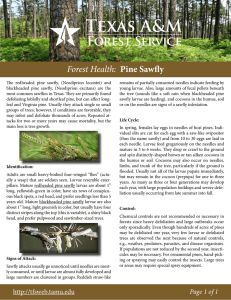Forest Health:
advertisement
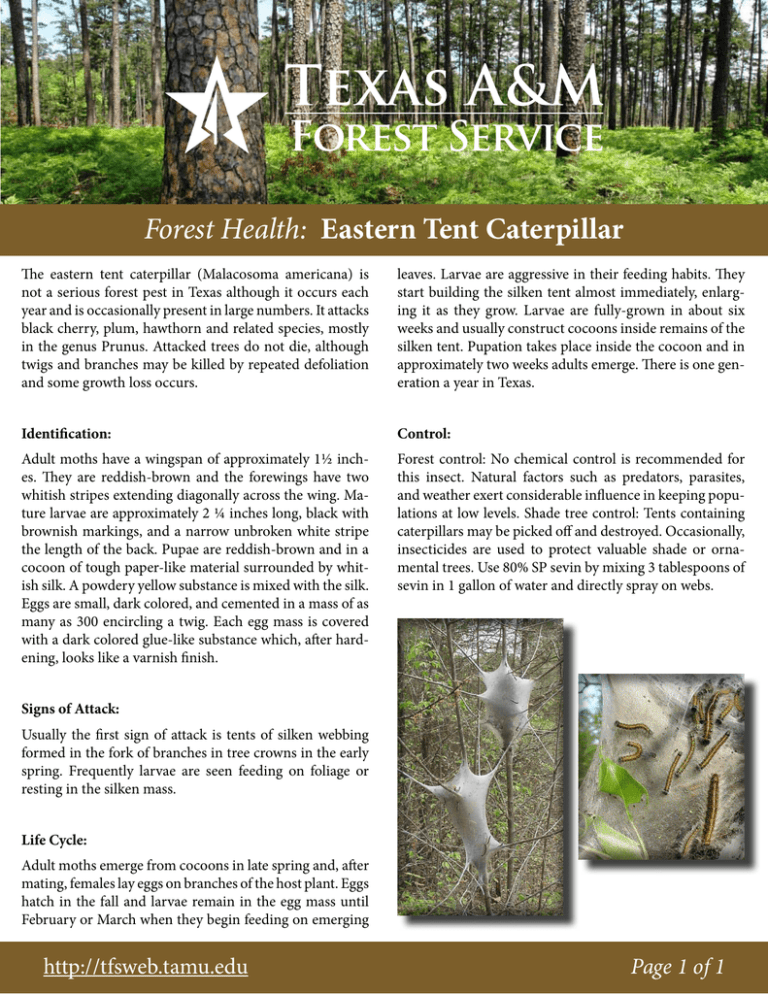
Forest Health: Eastern Tent Caterpillar The eastern tent caterpillar (Malacosoma americana) is not a serious forest pest in Texas although it occurs each year and is occasionally present in large numbers. It attacks black cherry, plum, hawthorn and related species, mostly in the genus Prunus. Attacked trees do not die, although twigs and branches may be killed by repeated defoliation and some growth loss occurs. leaves. Larvae are aggressive in their feeding habits. They start building the silken tent almost immediately, enlarging it as they grow. Larvae are fully-grown in about six weeks and usually construct cocoons inside remains of the silken tent. Pupation takes place inside the cocoon and in approximately two weeks adults emerge. There is one generation a year in Texas. Identification: Control: Adult moths have a wingspan of approximately 1½ inches. They are reddish-brown and the forewings have two whitish stripes extending diagonally across the wing. Mature larvae are approximately 2 ¼ inches long, black with brownish markings, and a narrow unbroken white stripe the length of the back. Pupae are reddish-brown and in a cocoon of tough paper-like material surrounded by whitish silk. A powdery yellow substance is mixed with the silk. Eggs are small, dark colored, and cemented in a mass of as many as 300 encircling a twig. Each egg mass is covered with a dark colored glue-like substance which, after hardening, looks like a varnish finish. Forest control: No chemical control is recommended for this insect. Natural factors such as predators, parasites, and weather exert considerable influence in keeping populations at low levels. Shade tree control: Tents containing caterpillars may be picked off and destroyed. Occasionally, insecticides are used to protect valuable shade or ornamental trees. Use 80% SP sevin by mixing 3 tablespoons of sevin in 1 gallon of water and directly spray on webs. Signs of Attack: Usually the first sign of attack is tents of silken webbing formed in the fork of branches in tree crowns in the early spring. Frequently larvae are seen feeding on foliage or resting in the silken mass. Life Cycle: Adult moths emerge from cocoons in late spring and, after mating, females lay eggs on branches of the host plant. Eggs hatch in the fall and larvae remain in the egg mass until February or March when they begin feeding on emerging http://tfsweb.tamu.edu Page 1 of 1
